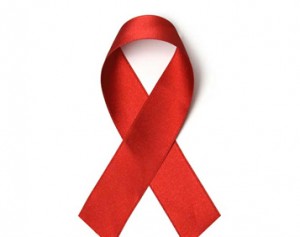Strategy to combat mother-to-child transmission of HIV/AIDS launched
 The Greater Accra Regional Health Directorate of the Ghana Health Service has launched an operational plan for elimination of mother-to-child transmission of HIV/AIDS after officials noticed upsurge of cases.
The Greater Accra Regional Health Directorate of the Ghana Health Service has launched an operational plan for elimination of mother-to-child transmission of HIV/AIDS after officials noticed upsurge of cases.
The three-year comprehensive blueprint seeks to cut down HIV infection to babies to at least five per cent by the end of breastfeeding period as well as provide antiretroviral therapy to 90 per cent of pregnant women by 2018.
The regional health officials also hope to increase access to HIV testing and counselling for pregnant women from 61.5 per cent to 100 per cent and identify 95 of HIV infected infants by close of the period 2018.
Dr Vera Opata, Greater Accra regional HIV Coordinator, giving an overview of the situation in the region during the launch on Friday, expressed worry that a greater number of transmissions happened during labour.
She said the region has the highest HIV prevalence rate with a record of 3.2 per cent in 2015 which is above the national average of under two per cent.
Mother-To-Child (MTCT) transmission HIV is the second most common mode of transmission of the deadly virus in the country, she said, with15 per cent of all new HIV infections coming from mothers to babies.
Transmission of the virus occur largely during pregnancy, delivery and breastfeeding, Dr Opata said, but “a big chunk of the transmission is happening when the woman is in labour.”
Approximately 40 to 45 per cent of infants born to HIV infected mothers acquire the infection.
She said 10 per cent of the transmissions occur during pregnancy, 10 to 15 per cent during labour and delivery while 5 to 20 per cent happen during breastfeeding period, depending on duration of breastfeeding.
She attributed the bleak situation in the region to inadequate HIV testing and counselling activities at existing prevention of MTCT centers as well as inappropriate management of logistics at various health facilities, deepened by shortage of test kits.
Shortage and irregular supply of antiretroviral drugs, poor documentation and non-reporting by some health facilities were also blamed for the development.
The coordinator, however, said health facilities were challenged by limited availability of space for staff to work, shortage of trained staff, staff rotation and retirement and ddifficulty of providing training to private providers who often do not report for training sessions.
She said the unavailability of lab equipment at some antiretroviral therapy sites, delays in repair of broken down lab equipment and rampant shortage of test kits and drugs often defeated the purpose to fight the concern.
Effective prevention of MTCT programmes require women and their infants to have access to – and to take up – a cascade of interventions including antenatal services and HIV testing during pregnancy.
Access to use of antiretroviral treatment by pregnant women living with HIV; safe childbirth practices and appropriate infant feeding; uptake of infant HIV testing and other post-natal healthcare services.
Implementation of the regional operational plan is expected to increase the proportion of HIV infected mothers who are initiated on antiretroviral drugs from 32.1 per cent to 95 per cent.
It is to raise proportion of exposed infants who are initiated on antiretroviral prophylaxis from 17.1 per cent to 95 per cent and shore up proportion of exposed infants who are tested at six weeks after delivery from 22.3 per cent to 95 per cent.
It will also increase the proportion of exposed infants who are retested at 18 months after delivery from 6.2 per cent to 95 per cent and push up proportion of pregnant women who had IPT 3 from 24.7 per cent to 80 per cent.
The officials say they put in place tracer interventions to achieve the targets set from 2016 to 2018.
The United Nations Children’s Fund (UNICEF) and other development partners supported the plan to scale up a programme for the elimination of mother-to-child transmission of HIV to the 660 health facilities across districts in the region.
Source: GNA
